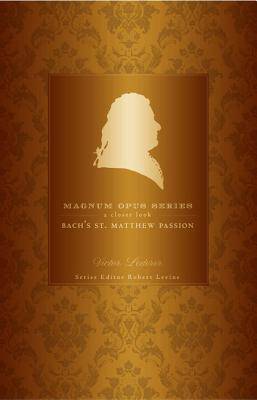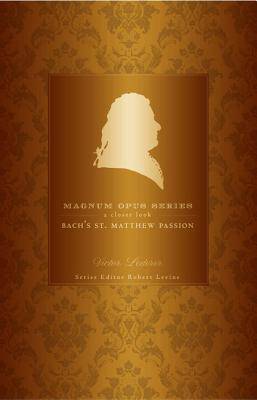
Je cadeautjes zeker op tijd in huis hebben voor de feestdagen? Kom langs in onze winkels en vind het perfecte geschenk!
- Afhalen na 1 uur in een winkel met voorraad
- Gratis thuislevering in België vanaf € 30
- Ruim aanbod met 7 miljoen producten
Je cadeautjes zeker op tijd in huis hebben voor de feestdagen? Kom langs in onze winkels en vind het perfecte geschenk!
- Afhalen na 1 uur in een winkel met voorraad
- Gratis thuislevering in België vanaf € 30
- Ruim aanbod met 7 miljoen producten
Zoeken
€ 39,95
+ 79 punten
Omschrijving
Johann Sebastian Bach's the St. Matthew Passion stands as a singular expression of religious sensibility. First performed in 1727, and conceived within the constraints of Bach's role as cantor of the St. Thomas Church in the provincial German city of Leipzig, the music has a power and profundity that readily transcend time and place. Yet the darkness of the subject - the betrayal, trial, and crucifixion of Jesus - and the complexity and sophistication of Bach's compositional techniques can make the St. Matthew Passion difficult listening for even the most eager novice. By highlighting the inspiration Bach drew from opera, this book truly illuminates the hybrid forms that comprise the work, thereby clarifying many of the composer's dramatic strategies. Drawn from the Gospel of St. Matthew, the narrative sections - featuring characters including the narrator-Evangelist, Pilate, Peter, Judas, and Jesus himself - have tremendous theatrical power, while non-Biblical arias and chorales offer moments of deep reflection and consolation. St. Matthew Passion shows the willing but intimidated beginner the way into the intricacies of Bach's masterwork while unveiling subtleties for the more knowledgeable listener as well. Finally, Lederer recounts the fascinating performance history of the St. Matthew Passion and looks at the merits of different recordings of this extraordinary work, indisputably one of the cornerstones of western music.
Specificaties
Betrokkenen
- Auteur(s):
- Uitgeverij:
Inhoud
- Aantal bladzijden:
- 144
- Taal:
- Engels
- Reeks:
Eigenschappen
- Productcode (EAN):
- 9780826429407
- Verschijningsdatum:
- 1/12/2008
- Uitvoering:
- Paperback
- Formaat:
- Trade paperback (VS)
- Afmetingen:
- 134 mm x 199 mm
- Gewicht:
- 163 g

Alleen bij Standaard Boekhandel
+ 79 punten op je klantenkaart van Standaard Boekhandel
Beoordelingen
We publiceren alleen reviews die voldoen aan de voorwaarden voor reviews. Bekijk onze voorwaarden voor reviews.









